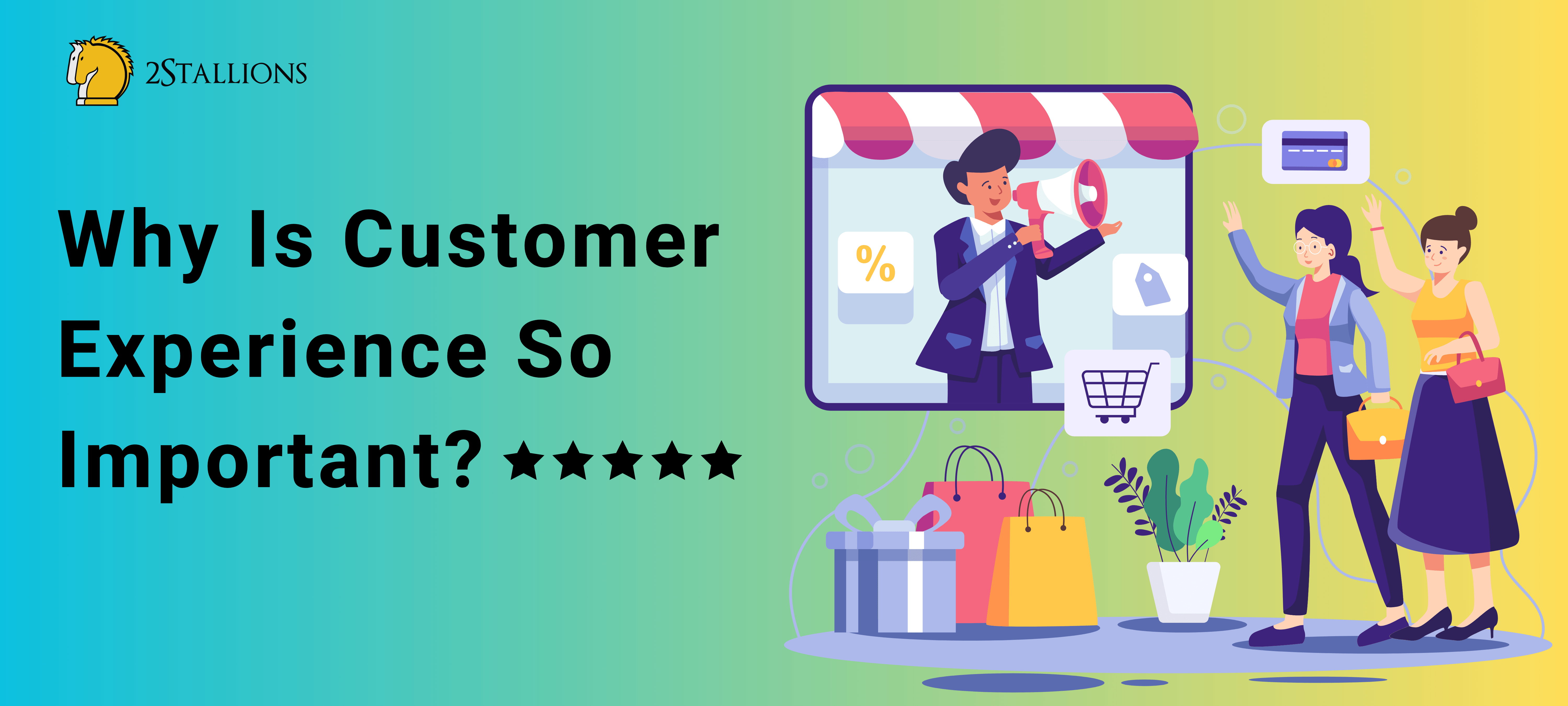SHARE

In today’s rapidly evolving business landscape, comparing traditional and digital business models has become a topic of critical importance.
As the world becomes increasingly interconnected, businesses must adapt to stay competitive. Understanding both models’ key differences and advantages is essential for success in the digital age.
This article will delve into the intricacies of traditional and digital business models, explore the transition from one to the other, evaluate their impact on businesses, and provide insights into future trends.
 Understanding Traditional Business Models
Understanding Traditional Business Models
Traditional business models have long been the foundation of numerous industries. These models typically involve physical brick-and-mortar establishments, relying on established supply chains and customer relationships.
Key components include a hierarchy of command, clear roles and responsibilities, and predefined processes. Such models offer stability and a proven track record.
Let’s delve deeper into the world of traditional business models and explore the various factors that shape their functioning and success.
 Key Components Of Traditional Business Models
Key Components Of Traditional Business Models
A key component of traditional business models is the emphasis on face-to-face interactions. Personal relationships play a crucial role in generating sales and maintaining customer loyalty.
Meeting customers in person allows businesses to establish trust and understand their needs better. This personal touch often leads to long-term partnerships and repeat business.
Geographical constraints have also been a defining characteristic of traditional business models. Physical stores and offices limit the reach and scalability of these models.
Local businesses rely heavily on the immediate community for their customer base, making expanding into new markets challenging.
However, this localised approach can also create a sense of community and loyalty among customers, fostering a strong customer base.
Furthermore, rigid operational structures can hinder adaptability and innovation.
Traditional business models often follow a hierarchical structure with clear roles and responsibilities. While this can provide clarity and accountability, it can stifle creativity and limit the ability to respond quickly to changing market trends.
The bureaucratic nature of these models can slow down decision-making processes and impede the implementation of new ideas.
Strengths and Weaknesses of Traditional Business Models
The strengths of traditional business models lie in their established reputations, long-standing customer bases, and perceived reliability.
Businesses operating for decades have built a solid reputation within their communities. This reputation is a strong foundation for growth and sustainability, as customers trust these businesses to deliver consistent quality.
However, traditional models can be hindered by slower response times, limited global reach, and resistance to change.
The absence of digital capabilities can result in missed opportunities and reduced efficiency. In today’s fast-paced and interconnected world, businesses must adapt quickly to changing customer demands and technological advancements.
Traditional models that are slow to embrace digital transformation may fall behind their more agile competitors.
Despite these challenges, many traditional businesses have successfully adapted and integrated digital strategies into their operations.
They have recognised the importance of online presence and have leveraged eCommerce platforms to expand their reach beyond their physical locations.
By combining the strengths of traditional models with the advantages of digital technologies, these businesses have managed to thrive in the ever-evolving business landscape.
In conclusion, traditional business models have their strengths and weaknesses. While they offer stability and a proven track record, they can also face limitations regarding adaptability and global reach. As the business world evolves, traditional businesses must embrace digital transformation and find innovative ways to stay competitive in the market.
Ready to level up your brand online? Our digital marketing agency is built to deliver real growth.
 Exploring Digital Business Models
Exploring Digital Business Models
Digital business models have emerged as revolutionary alternatives to traditional models in recent years.
Defined by their reliance on digital technologies and online platforms, these models offer unprecedented possibilities for innovation, scalability, and global reach.
Embracing digital transformation has become essential for businesses thriving in the modern economy. If you’re looking to take the next step, our digital marketing agency can help you build a results-driven strategy tailored for today’s competitive online landscape.
In today’s interconnected world, where technology is advancing at an astonishing pace, digital business models have become the driving force behind many successful enterprises.
These models have transformed how businesses operate, enabling them to leverage the power of the Internet to reach a wider audience and tap into new markets.
By embracing digital technologies, businesses can streamline their processes, making them faster and more efficient. This saves time and reduces costs, allowing companies to allocate resources more effectively.
With the ability to automate repetitive tasks, businesses can focus on more strategic initiatives, driving growth and innovation.
Defining Digital Business Models
Digital business models leverage technology to streamline processes, enhance customer experiences, and drive growth. These models operate primarily online, tapping into vast digital ecosystems and data-driven insights.
They prioritise agility, innovation, and customer-centricity. By harnessing the power of the Internet, businesses can break geographical barriers and expand their markets exponentially.
One of the critical aspects of digital business models is their ability to harness the power of data. By collecting and analysing vast amounts of information, businesses can gain valuable insights into customer behaviour, preferences, and market trends.
This data-driven approach allows companies to make informed decisions, tailor their offerings to meet customer needs and stay ahead of the competition.
Moreover, digital business models allow businesses to create personalised customer experiences.
Through targeted marketing campaigns and tailored recommendations, companies can build stronger relationships with their audience, fostering loyalty and increasing customer satisfaction.
Advantages and Disadvantages of Digital Business Models
The advantages of digital business models are numerous. They include faster and more efficient processes, increased productivity, enhanced customer engagement, and improved data analytics.
With digital models, businesses can target a larger audience, optimise marketing efforts, and personalise customer experiences. Our digital marketing agency specialises in helping brands achieve these goals with data-backed digital strategies.
However, digital models also have challenges, such as cybersecurity risks, increased competition, and the need for ongoing technological adaptation.
As businesses embrace digital transformation, they must also be aware of the potential risks and challenges that come with it. Cybersecurity has become a major concern in the digital age, with businesses needing to invest in robust security measures to protect their data and systems from cyber threats.
The digital landscape is highly competitive, with businesses constantly vying for customers’ attention. Companies must continuously innovate and adapt to changing market dynamics to stay relevant.
Despite these challenges, the benefits of digital business models far outweigh the risks. With the ability to reach a global audience, optimise operations, and deliver personalised experiences, businesses can unlock new opportunities for growth and success.
Digital transformation is no longer an option but a necessity for businesses looking to thrive in the digital age.
 The Shift From Traditional To Digital
The Shift From Traditional To Digital
Multiple factors drive the transition from traditional to digital business models. Firstly, technological advancements have revolutionised how businesses operate, creating new opportunities and disrupting conventional industries.
Additionally, changing consumer expectations and behaviours, such as the preference for online shopping and personalised experiences, have accelerated the need for digital transformation.
The business landscape has witnessed a remarkable shift towards digitalisation in recent years. This transformation has been fueled by various factors that have reshaped how companies conduct their operations.
One significant driver of this transition is the proliferation of mobile devices. With the advent of smartphones and tablets, people now have access to the Internet and digital services at their fingertips.
This has opened up a whole new world of possibilities for businesses, allowing them to reach customers anytime, anywhere.
Another key factor contributing to the shift to digital models is the rise of social media. Platforms like Facebook, Instagram, and X (formerly known as Twitter) have become integral parts of people’s lives, offering businesses unprecedented opportunities to engage with their target audience.
Companies can build brand awareness, foster customer loyalty, and drive sales through social media. The power of social media lies in its ability to connect people from all walks of life, creating a global network that transcends geographical boundaries.
Furthermore, the increasing accessibility of the Internet has played a vital role in driving the transition to digital business models.
With the widespread availability of high-speed internet connections, businesses can now easily operate online. This has led to the emergence of eCommerce, where consumers can browse and purchase products or services from the comfort of their own homes.
The convenience and efficiency of online shopping have attracted a growing number of consumers, prompting businesses to establish a strong online presence to remain competitive.
Factors Driving The Transition
The proliferation of mobile devices, the rise of social media, and the increasing accessibility of the Internet have all played significant roles in driving the transition to digital models.
Moreover, the COVID-19 pandemic has further underscored the necessity of digital capabilities, as businesses were forced to adapt to remote work and online service provision.
The COVID-19 pandemic has brought about unprecedented challenges for businesses worldwide. With lockdowns and social distancing measures, traditional brick-and-mortar stores have faced significant disruptions.
In response, businesses have had to quickly pivot to digital channels to continue serving their customers. This sudden shift has highlighted the importance of having robust digital capabilities in place, as companies with existing online infrastructure were able to adapt more seamlessly.
Furthermore, the pandemic has accelerated the adoption of remote work practices. With employees working from home, businesses rely heavily on digital tools and technologies to ensure smooth collaboration and communication.
Video conferencing platforms, project management software, and cloud-based storage solutions have become essential for remote teams to stay connected and productive.
Challenges In The Transition Process
Transitioning from traditional to digital business models is not without its challenges. Businesses must navigate technological complexities, manage organisational change, and address potential employee resistance.
Cybersecurity threats and data privacy concerns pose risks that require careful consideration. Overcoming these challenges necessitates strategic planning, strong leadership, and a willingness to embrace innovation.
One of the main challenges businesses face when transitioning to digital models is the need to adapt to rapidly evolving technologies.
The digital landscape is constantly evolving, with new tools and platforms emerging rapidly. Companies must stay abreast of these developments and invest in the right technologies to remain competitive.
This requires a deep understanding of the digital ecosystem and identifying which technologies best serve the business’s objectives.
Organisational change is another significant challenge in the transition process. Shifting from traditional to digital models often requires fundamentally rethinking business processes and structures.
This can be met with resistance from employees who may be accustomed to the old ways of doing things.
Effective change management strategies, clear communication, and training programs are essential to help employees embrace digital transformation and understand the benefits it brings.
Cybersecurity threats and data privacy concerns are critical considerations in transitioning to digital models. With the increasing reliance on digital systems and the collection of vast amounts of customer data, businesses must prioritise protecting sensitive information.
Implementing robust cybersecurity measures, such as encryption and multi-factor authentication, is crucial to safeguarding against cyber attacks.
Businesses must comply with data protection regulations and ensure customer data is handled responsibly and ethically.
The shift from traditional to digital business models is driven by technological advancements, changing consumer expectations, and the need for digital transformation.
Factors such as the proliferation of mobile devices, the rise of social media, and the increasing accessibility of the Internet have played significant roles in driving this transition.
However, businesses must also navigate challenges such as technological complexities, organisational change, and cybersecurity threats to transition to digital models successfully.
 Evaluating The Impact on Businesses
Evaluating The Impact on Businesses
The shift from traditional to digital business models profoundly impacts how businesses operate and interact with their customers.
Two significant areas of impact are operational efficiency and customer engagement.
Changes in Operational Efficiency
Digital business models allow businesses to streamline operations, automate processes, and reduce costs.
Digital tools and software enable efficient resource allocation, inventory management, and supply chain optimisation.
Real-time data analytics empowers businesses to make data-driven decisions, identify improvement areas, and innovate faster.
Impact on Customer Engagement and Satisfaction
Digital business models provide businesses with the means to enhance customer engagement and satisfaction.
Businesses can create meaningful connections with their customers through personalised marketing, targeted advertising, and seamless online experiences.
Digital platforms enable businesses to gather and analyse customer feedback and adapt quickly to changing customer needs and preferences.
 Future Trends in Business Models
Future Trends in Business Models
Looking ahead, the future of business models will continue to evolve as technology advances and consumer expectations evolve.
Traditional and digital models will have their place in the business landscape, but digital models are poised for significant growth.
Predicted Advancements in Digital Models
As technology evolves, digital business models are expected to see advancements in artificial intelligence, blockchain, and augmented reality.
These advancements will further optimise processes, enable advanced personalisation, and create immersive customer experiences.
Integrating Internet of Things (IoT) devices into business models will revolutionise automation and data collection.
The Potential Future of Traditional Models
Although digital models are on the rise, traditional models will only disappear partially. Some industries, such as manufacturing or certain service-oriented businesses, may still benefit from the familiarity and reliability of traditional approaches.
Hybrid models that combine digital and traditional elements may become more prevalent, offering the best of both worlds.
In conclusion, comparing traditional and digital business models is essential for any business aiming to remain competitive in the ever-changing business landscape.
Understanding each model’s key components, strengths, and weaknesses is crucial for making informed decisions. As businesses continue to transition from traditional to digital models, the impact on operational efficiency and customer engagement becomes increasingly evident.
Looking towards the future, digital business models are expected to dominate as technology advances. However, traditional models will still have their place, and a hybrid approach may emerge as the ultimate solution.
Success lies in embracing digital transformation and harnessing the immense possibilities it brings. As a trusted digital marketing agency in Singapore, we’re here to guide your business through this shift and ensure sustainable growth in the digital era. Schedule a consultation with us today.
Frequently Asked Questions About Digital Business Models
”What is a digital business model?"
The digital business model can be broken down into several components:
- Value Proposition: What unique value does the digital product or service provide customers?
- Customer Segments: Who are the target audiences for the digital offering?
- Channels: Through what digital platforms or mediums will the product or service be delivered?
- Customer Relationships: How does the business engage with customers digitally?
- Revenue Streams: How will the business monetise its digital offerings?
- Key Activities: What critical actions must the business undertake to support its digital offerings?
- Key Resources: What assets or resources are essential for the digital model?
- Key Partnerships: What external entities or services are necessary to facilitate the digital model?
- Cost Structure: What are the costs of delivering the digital product or service?
”How can we start with the digital business model?"
- Research the Market: Understand customer needs, competitors, and digital trends.
- Define Your Value Proposition: Determine the unique value your digital offering provides.
- Segment Your Audience: Identify specific groups that will benefit most from your digital offering.
- Choose Channels: Decide on the best digital platforms to reach and serve your customers.
- Plan Monetisation: Determine how you’ll generate revenue, whether through sales, subscriptions, ads, etc.
- Map Out Key Activities and Resources: Outline what’s needed to deliver on your digital promise.
- Forge Key Partnerships: Identify potential partners that can facilitate or enhance your digital offering.
- Calculate Costs: Ensure you understand the financial structure behind your digital model.
”What is the role of the digital business model?"
The role of the digital business model is to provide a structured approach to delivering and capturing value in a digital environment. It guides how a company will operate, compete, and achieve profitability online.
"What are the key advantages of adopting a digital business model compared to a traditional one?"
- Scalability: Digital models often allow rapid scaling with relatively low incremental costs.
- Reach: Access to a global audience.
- Flexibility: The ability to pivot quickly based on data and market feedback.
- Lower Overheads: Reduced physical infrastructure needs.
- Data-Driven Insights: Digital operations provide a wealth of data for informed decision-making.
”What is digital business model transformation?"
Digital business model transformation refers to the shift from traditional business operations to models that leverage digital technologies and platforms to create new value propositions and revenue streams. It involves reimagining business processes, customer experiences, and the underlying value chain in the context of a digital-first world.


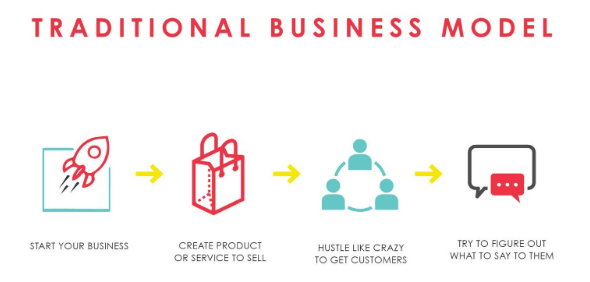 Understanding Traditional Business Models
Understanding Traditional Business Models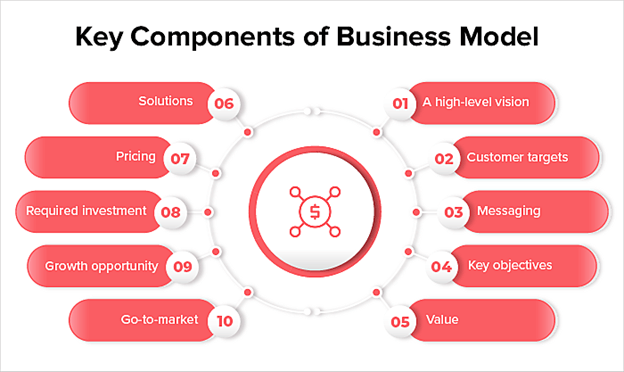 Key Components Of Traditional Business Models
Key Components Of Traditional Business Models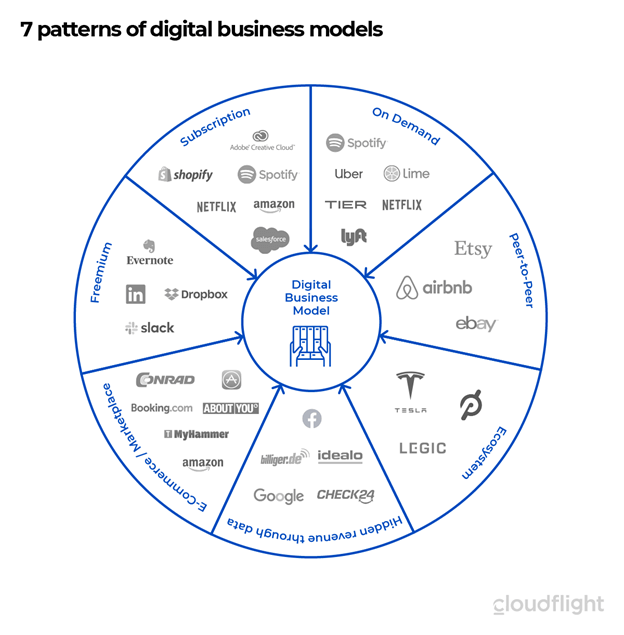 Exploring Digital Business Models
Exploring Digital Business Models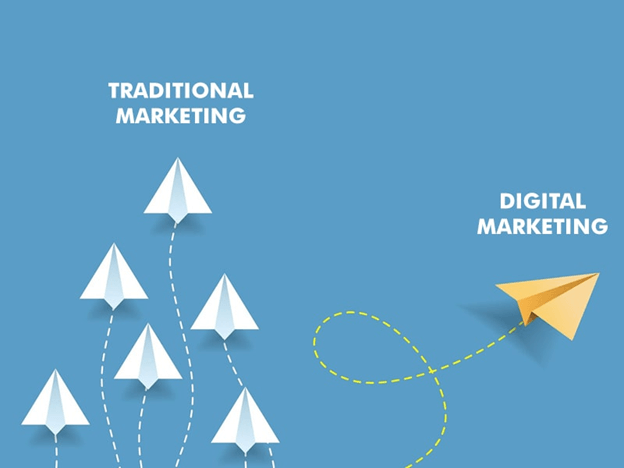 The Shift From Traditional To Digital
The Shift From Traditional To Digital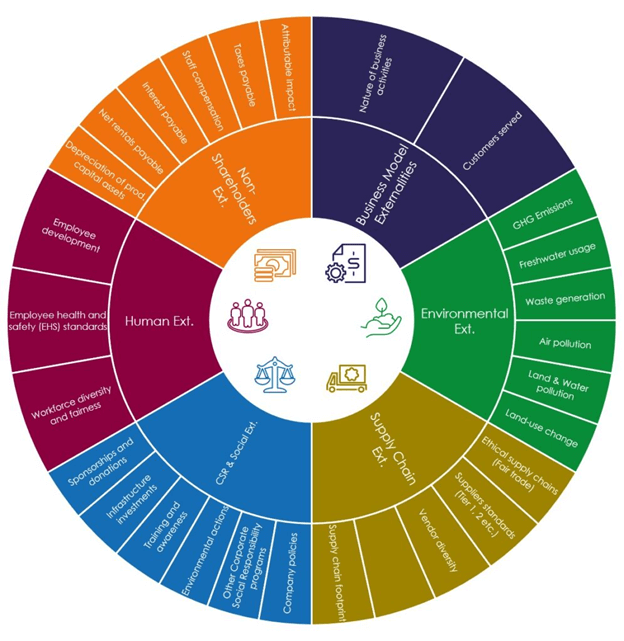 Evaluating The Impact on Businesses
Evaluating The Impact on Businesses Future Trends in Business Models
Future Trends in Business Models

